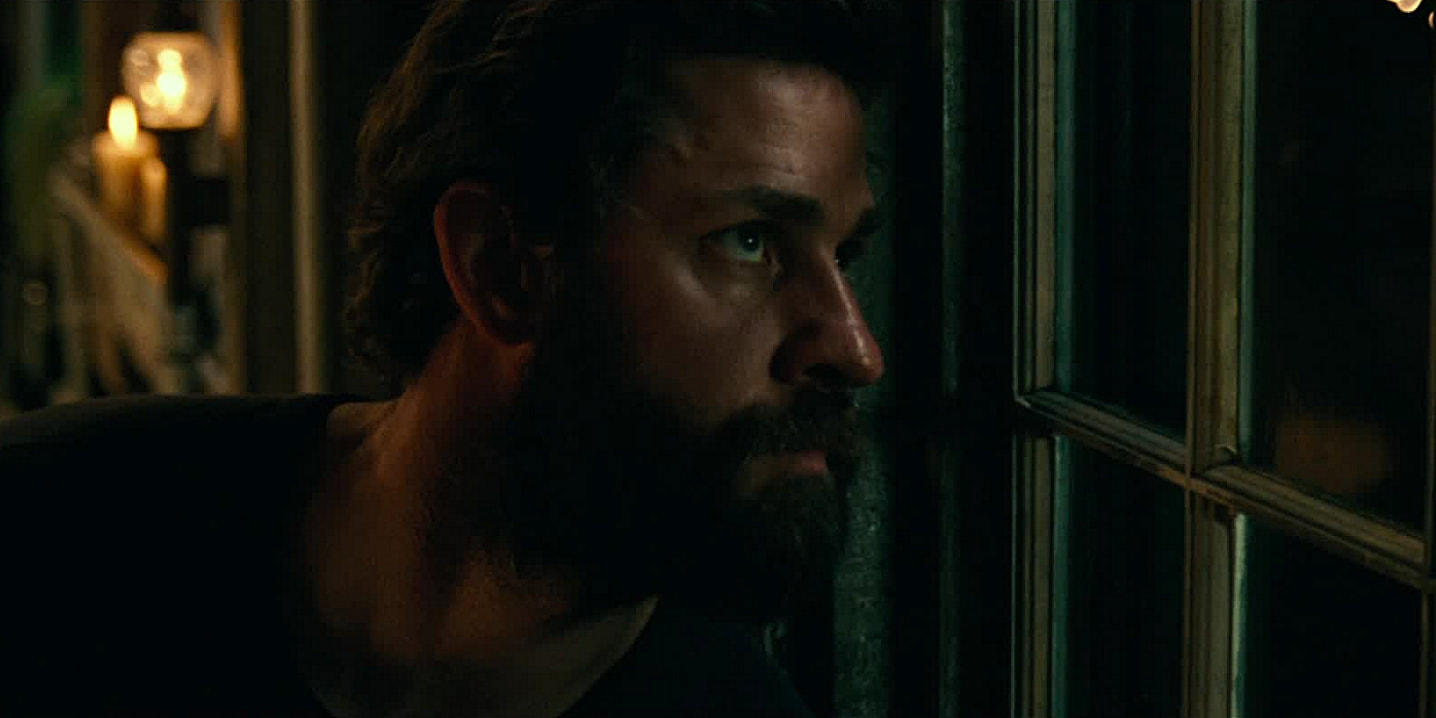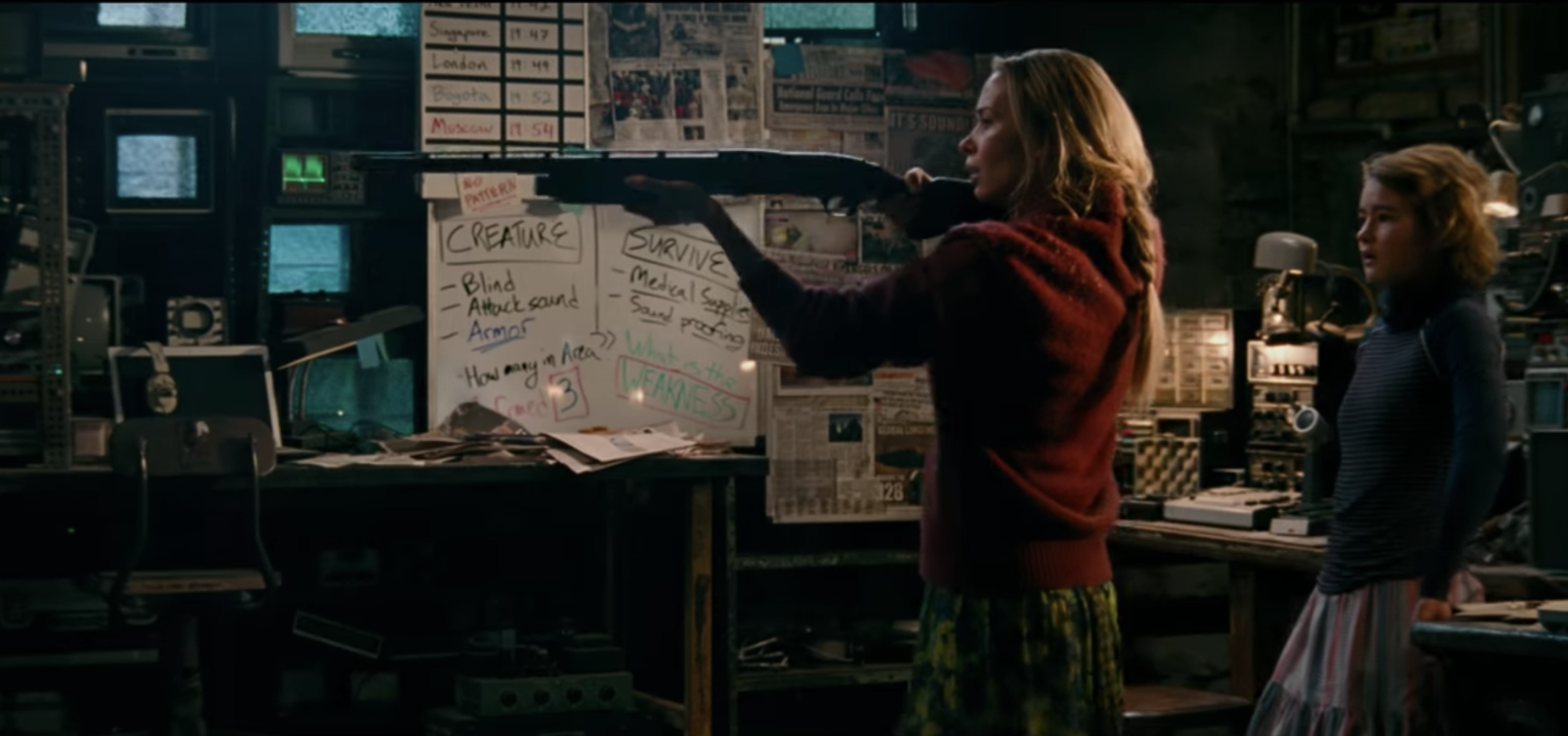Fair warning: considerable spoilers follow – read after watching.
Well, that was intense.
A Quiet Place is the latest horror phenom – written and directed by John Krasinski (better known as Jim from the American remake of The Office), and co-starring his real-life wife Emily Blunt (Edge Of Tomorrow), the film follows a family of four as they move on with their lives in an isolated rural community while dealing with the loss of their youngest son/brother, Beau.
Oh, and there are creatures that hunt anything that makes a noise louder than a bare foot lightly walking on carpet.
I almost forgot to mention the creatures because – in terms of the story and the characters – they are secondary to the grief the family, which includes a fearful older son Marcus and deaf daughter Regan (brilliantly played by actually-deaf actress Millicent Simmonds), is feeling in the wake of their tragic loss.
The film has become famed and acclaimed for the world in which it exists: sightless, vicious, fast and heavily-armoured creatures with hypersensitive hearing have all but wiped out humanity by attacking anything that makes noise, and it uses that limitation in how the characters behave to its advantage.
The result is a film that is silent for long stretches, utilising sound to great effect – whether it is a toy space shuttle going off at the wrong time, or a new-born baby crying, or father Lee and his son Marcus making as much noise as they like near a waterfall. As a viewer, you get into the swing of this silence, meaning that every sudden noise becomes something dreadful, and every tense situation – like mother Evelyn walking down a creaky staircase – is amplified by the potential for noise.

This also made it a fairly unique cinema experience. Even though the theatre I was in was at least two-thirds full, you could’ve heard a pin drop at certain points of the film. I found myself carefully timing when I took a sip of drink or grabbed a Malteser, consciously breathing through my mouth and not shuffling in my seat so as to make as little noise as possible.
It was an intense experience – and one of my absolute favourite cinema experiences in the past few years.
But my enjoyment of the film itself all came down to those characters, and how beautifully they portrayed the narrative and their grief while barely using dialogue. And in that way, this is one of the better horror movies in recent times.
The limitation on sound makes for an intense viewing experience for cinema-goers, but that same limitation means that the characters have repressed so much of what they’re feeling. Regan, for example, feels responsible for the death of her brother, and feels that her father blames her for what happened, but can’t outright ask him about it.
And Lee, for his part, can’t just tell his daughter that he loves her. The art of conversation is distilled down to its strategic use, to a series when and where and for how long stats that inhibit real communication.

A Quiet Place isn’t just an exploration of what living in this world does to this family; its an exploration of what not dealing with this grief does to this family. And Krasinski, Blunt, Simmonds and Noah Jupe play it perfectly, wearing that grief on their tatty sleeves, their outward appearance – worn out clothes, exhaustion, fear, bare feet – mirroring what they’re feeling inside.
By the time we reach the conclusion of the film, the family has welcomed a new member and Regan has made amends with her Dad, and the family is confronting their fears head on, striking back at the so-called “death angels” with all they have.
It’s a beautiful conclusion, a happy ending to a film that is intense to watch but ultimately affirming of the human condition.
Highly recommended.
A Quiet Place is written and directed by John Krasinski, from a screenplay by Bryan Woods and Scott Beck, and stars Krasinski, Emily Blunt, Millicent Simmonds, Noah Jupe and Cade Woodward. It is in cinemas now.
